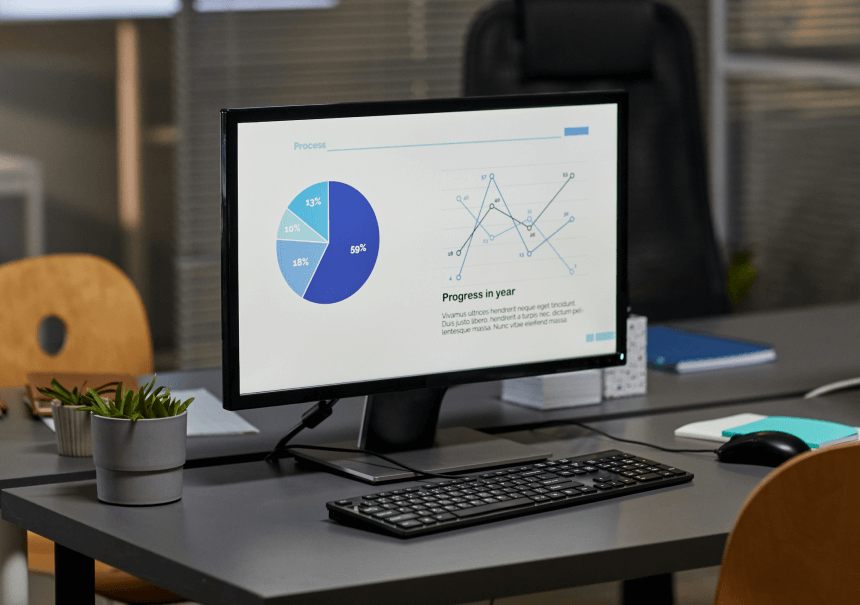How will Marketing Automation increase the effectiveness of your emails?

When running a business, developing an effective e-mail marketing strategy becomes a key aspect. It is a tool that is not only an integral part of today’s business world, but is also dynamically gaining popularity over the years.
However, maintaining regular contact with all your customers may prove to be a difficult challenge to overcome. In such cases, automating the email sending process becomes incredibly helpful. Thanks to the use of automated e-mail campaigns, entrepreneurs have the opportunity to establish a more effective and personalized dialogue with recipients.
Implementing an automated email strategy is a key step in optimizing your marketing activities. It will not only save you valuable time, but will also significantly increase your sales, provided it is carried out carefully and precisely.
What is email automation?
E-mail automation is becoming an indispensable tool in effectively managing communication with customers. This is the strategic use of pre-planned email campaigns sent to subscribers based on specific triggers.
For example, when someone signs up to your mailing list, you can automatically send them a personalized welcome message. This first welcome contact plays a key role in introducing new subscribers to your brand, providing information on what to expect, and can also be a great opportunity to offer a discount or promotional code as a reward for joining your campaign.
As your business grows, manually sending emails to each new subscriber becomes a logistical challenge. Campaign automation allows you to instantly send scheduled emails after your first subscription, making the entire process more efficient and delay-free. Setting up an automatic welcome series not only facilitates the first contact, but also transforms it into a tool for building lasting relationships with customers and collecting important information about their preferences and expectations.
Email automation. Why is it worth it?
In today’s business world, the key aspect of any marketing strategy is not only hard work, but also wise actions. Efficiency is becoming a key element in saving time, money, resources and energy. In the context of marketing automation, where software and technology are used to automate marketing tasks, email automation plays the same role in the area of email communications with subscribers.
Introducing email automation is not only intended to make processes easier, but also to benefit customers. Regular, personalized emails sent through automation help build lasting relationships with customers, strengthening credibility and trust in the brand.
The use of automation allows you to increase customer response rates by delivering appropriate content at optimal times. Email automation software provides support so you don’t have to worry about email campaigns. Instead, you can focus on other areas of your business knowing that the technology is doing the work for you.
Now let’s take a look at how to effectively implement email automation in your business to acquire new customers and maintain strong relationships with existing ones.
Email list segmentation
Segmenting your email list is a key element of effectively using email automation. While automated emails can reach all recipients, properly meeting each customer’s individual needs requires a more precise approach. Therefore, it is important to treat each person on your list as unique, with different motivations and expectations.
Automatic email list segmentation is a practice that improves campaign effectiveness and increases open rates. With this strategy, you can deliver more targeted and personalized content, which translates into better audience engagement.
There are several criteria you can use to segment your email list:
1. Date of registration. With this criterion, you can tailor your content depending on how long someone has been associated with your list. New subscribers may need a different approach than those who have been with you for a long time.
2. Demographics. Segmentation based on demographic data, such as age, gender or location, allows you to tailor content to the preferences of a specific audience.
3. Location. For companies operating in different regions, location-based segmentation is a key element in delivering content related to specific geographical areas.
4. Shopping behavior. By analyzing your customers’ purchase history, you can provide personalized offers, product recommendations and information about promotions.
5. Special occasions. Segmentation based on upcoming special events allows you to tailor content to specific celebrations, thereby increasing the attractiveness of offers.
6. Place in the sales funnel. You can segment your list based on a customer’s level of engagement in your sales funnel. People close to purchasing may receive different content than those in the consideration stage.
7. Conduct on the website. Analysis of behavior on the website allows us to deliver personalized content that meets the individual interests of recipients.
Remember that segmentation is a dynamic process that requires regular analysis and adjustment. Thanks to this, you will be able to maintain the high effectiveness of your email campaigns, while ensuring customer satisfaction and engagement.
Segmenting your list is one thing, but a key element of an effective marketing strategy is automating your email campaigns using the right triggers. It is worth adapting the content to the recipients’ behavior, which allows for more personalized and effective messages.
Analysis of data from a segmented list allows you to create automated campaigns in which messages are sent in response to specific user actions or events. It is crucial to define the goals of the campaign and determine what behaviors should trigger the sending of particular messages.
Email personalization
Personalizing email campaigns is a key element of building lasting relationships with customers. Segmentation is a step towards delivering more targeted content, but personalization goes a step further by creating individual experiences for each audience.
The most important aspects of email personalization include:
1. Name in the subject or body. People like it when messages are addressed directly to them. Using your name in the subject or body of your message makes the recipient feel more noticed and appreciated.
2. Sending emails at the best time. Analysis of user activity data allows you to determine the optimal time for sending messages. Providing content at the right time increases the chance of being noticed and interacted with.
3. Matching content to interests. Using information about previous purchases, products viewed and websites visited allows us to provide personalized recommendations and offers. This approach makes messages more relevant to a specific recipient.
It is also worth showing the human side of the brand. Audiences engage more with companies that present themselves as authentic, teams working to deliver valuable content. Therefore, it is worth emphasizing the human nature of the company, e.g. by attaching photos of employees, reports from behind the scenes or stories about the team.
To sum up, personalization not only increases the effectiveness of email campaigns, but also builds stronger bonds with customers, which translates into loyalty and trust in the brand.
Summary
Email marketing automation is a key element of an effective business strategy. When running a business, it becomes necessary to develop a solid e-mail marketing strategy, which is not only an integral part of modern business, but is also dynamically gaining popularity. However, maintaining regular contact with all your customers can be a challenge. This is where email automation comes in handy, enabling entrepreneurs to have a more effective and personalized dialogue with their recipients.
Email automation involves the strategic use of pre-planned email campaigns sent to subscribers based on specific triggers. For example, a new subscriber may receive a personalized welcome message, which plays a key role in presenting the brand and offer.
Implementing an automated email strategy not only saves time, but also significantly increases sales, provided you plan carefully. Automation allows you to instantly send scheduled emails after your first subscription, making the process more efficient and lag-free. Additionally, configuring an automatic welcome series makes it easier to build lasting relationships with customers and collect data about their preferences.
In today’s business environment, it’s crucial to act wisely, and email automation fulfills this task, simplifying processes and bringing benefits to both entrepreneurs and customers. The effectiveness of automation lies in the delivery of regular, personalized messages, which helps build lasting relationships with customers and strengthens the credibility of the brand.
Segmenting your email list is another important element of an effective strategy. Although automated emails can reach all recipients, segmentation allows you to more precisely meet the individual needs of each customer. It’s worth treating each person on your list as unique, with different motivations and expectations. Automatic email list segmentation improves campaign performance by delivering more targeted content.
Personalizing your email campaigns is also a key step in an effective marketing strategy. This means not only adding the recipient’s name to the content, but also adapting the content to preferences, purchase history or location. In this way, personalization not only increases campaign effectiveness, but also builds stronger bonds with customers, contributing to brand loyalty and trust.
To summarize, an effective email marketing strategy based on automation, segmentation and personalization is a key tool for building lasting relationships with customers, increasing loyalty and achieving better business results.



